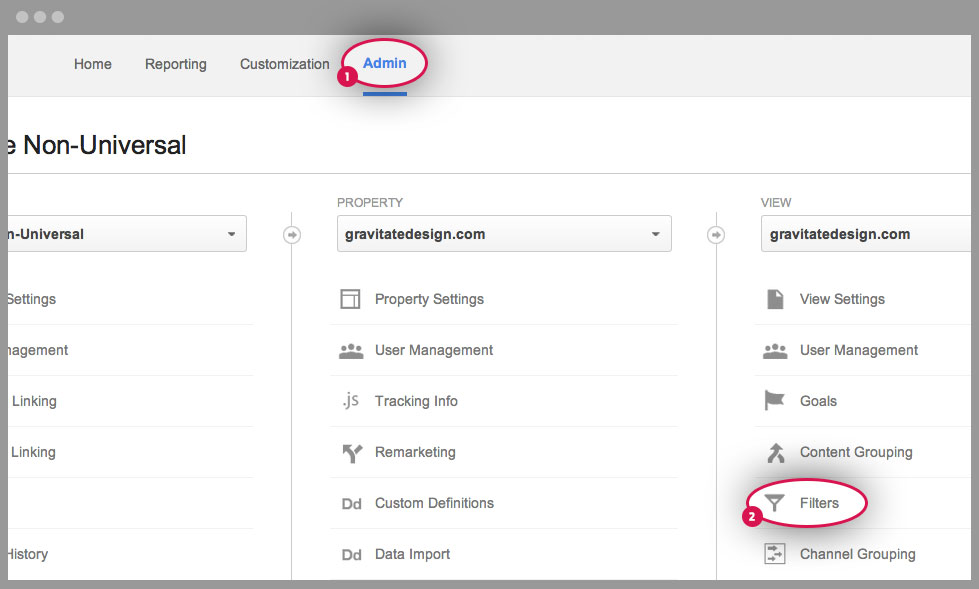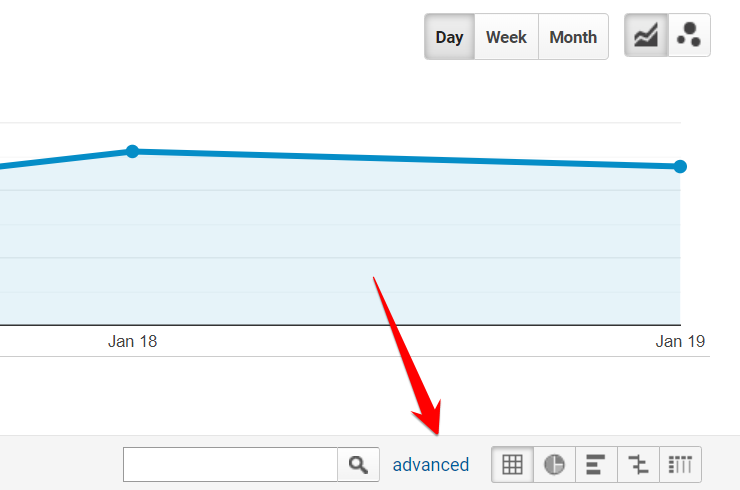The Buzz on In Which Order Does Google Analytics Filter Data
Table of ContentsThe Best Strategy To Use For In Which Order Does Google Analytics Filter Data3 Easy Facts About In Which Order Does Google Analytics Filter Data DescribedSome Known Details About In Which Order Does Google Analytics Filter Data 7 Easy Facts About In Which Order Does Google Analytics Filter Data DescribedThe Best Strategy To Use For In Which Order Does Google Analytics Filter DataA Biased View of In Which Order Does Google Analytics Filter Data
io" is the site and if I go to the homepage as well as click some other pages like signup web page, it reveals me in the real-time record popping-up as exactly how we established up in the filters. This page is the of website and also you can see the sub-domain highlighted as.
Similar to the previous process, we should develop a new filter as mentioned in the last steps - In Which Order Does Google Analytics Filter Data. in this new filter, I'm calling it as and also I'm choosing Then I'm typing the filter pattern as In this filter pattern, the pipe sign () is consisted of to affix any kind of other hostname that you intend to include along with the various other hostnames
The Single Strategy To Use For In Which Order Does Google Analytics Filter Data
This is how you can go examine your web site and also return view in real-time records. The real-time record now reveals the adjustments that you made when producing that filter. In this instance, the Fractured web page describes about URL of the web page i. e when the Page link being duplicated the exact same, excluding lower or any minute components.
Currently create a new filter and I call it as. Choose as well as pick the filter areas.

The smart Trick of In Which Order Does Google Analytics Filter Data That Nobody is Discussing
The complying with guidelines will certainly stroll you with the procedure: Develop a brand-new Google Spread sheet (or open up an existing one). From the food selection bar choose: Add-ons > Obtain Add-ons Find the Google Analytics Add-on from the attachments gallery and choose it. From the add-on summary web page, click the "+" in the leading right edge to add this add-on to your spreadsheet.
Click "Approve". The add-on is currently mounted. A "Google Analytics" submenu should currently appear in the Attachments menu. Records can be developed by hand or with the aid of the add-on's record creation tool. To use the device, pick "Attachments" > "Google Analytics" > "Develop a New Record" from useful link the menu bar.
This is intentional. In Which Order Does Google Analytics Filter Data. The device is suggested to help get you started and provide you with the information you may not understand off the top of your head. The rest of the areas will certainly require to be gone into by you. If you have any type of concerns regarding what to place in each field, see the recommendation at the base of this web page.
All About In Which Order Does Google Analytics Filter Data
It can be a sheet in the spreadsheet you're currently in, or a different spreadsheet completely (as long as you have edit accessibility to that spreadsheet). To publish the results to a various spreadsheet duplicate the spread sheet URL and paste it right into the cell to the right of the "spreadsheet-url" specification.
This opens up a report organizing dialog where you can wikipedia reference turn organizing on and off, as well as establish how often your record will certainly run. To transform scheduling on, examine the box identified "Enable reports to run immediately." As soon as scheduling is enabled you can make use of the select dropdown to manage the moment as well as frequency.
When scheduling records, see to it there is a lot of time between when you produce useful site the timetable and when the schedule is intended to run. If it's also close to the first occurrence of the scheduled time, there's an opportunity those reports will be delayed until the next occurrence. It's typically best to leave at the very least a one-hour barrier.
The smart Trick of In Which Order Does Google Analytics Filter Data That Nobody is Discussing
Hidden criteria are advanced alternatives that are not required for many reports and are concealed by default. You can utilize these parameters by un-hiding the rows 14-16 in the Report Arrangement sheet. Call Description This is the report name. It will certainly likewise be the name of the sheet where the report information is written.
The adhering to expression returns the last day of the previous month: =EOMONTH(TODAY(), -1) The end date for bring Analytics data. Requests can define an end date formatted as YYYY-MM-DD, or as a loved one date (e. g., today, yesterday, or Ndays, Ago where N is a positive integer). You can additionally use Sheets day functions to specify this value programmatically.
Metrics can be defined in either layouts: For example, every one of the complying with are legitimate values for the Metrics parameter. ga: sessions, ga: bounces ga: sessions ga: jumps ["expression": "ga: sessions/ga: individuals", "pen name": "Sessions per Individual", "formatting, Kind": "DRIFT", "expression": "ga: overall, Events/ga: pageviews", "alias": "Events per Pageview", "formatting, Kind": "FLOAT"] For most utilize cases, a listing of metric IDs is the most convenient method to define the Metrics criterion.
The Ultimate Guide To In Which Order Does Google Analytics Filter Data
The full list of dimensions as well as metrics and also their valid combinations is available making use of the Dimensions and also Metrics Explorer. Name Summary A checklist of dimensions to quiz. Dimensions can be specified in either layouts: For instance, every one of the following are valid worths for the Metrics parameter. ga: source, ga: tool, Group ga: source ga: tool, Category ["name": "ga: resource", "name": "ga: device, Category"] For many use instances, a checklist of dimension IDs is the easiest means to define the Capacities parameter.